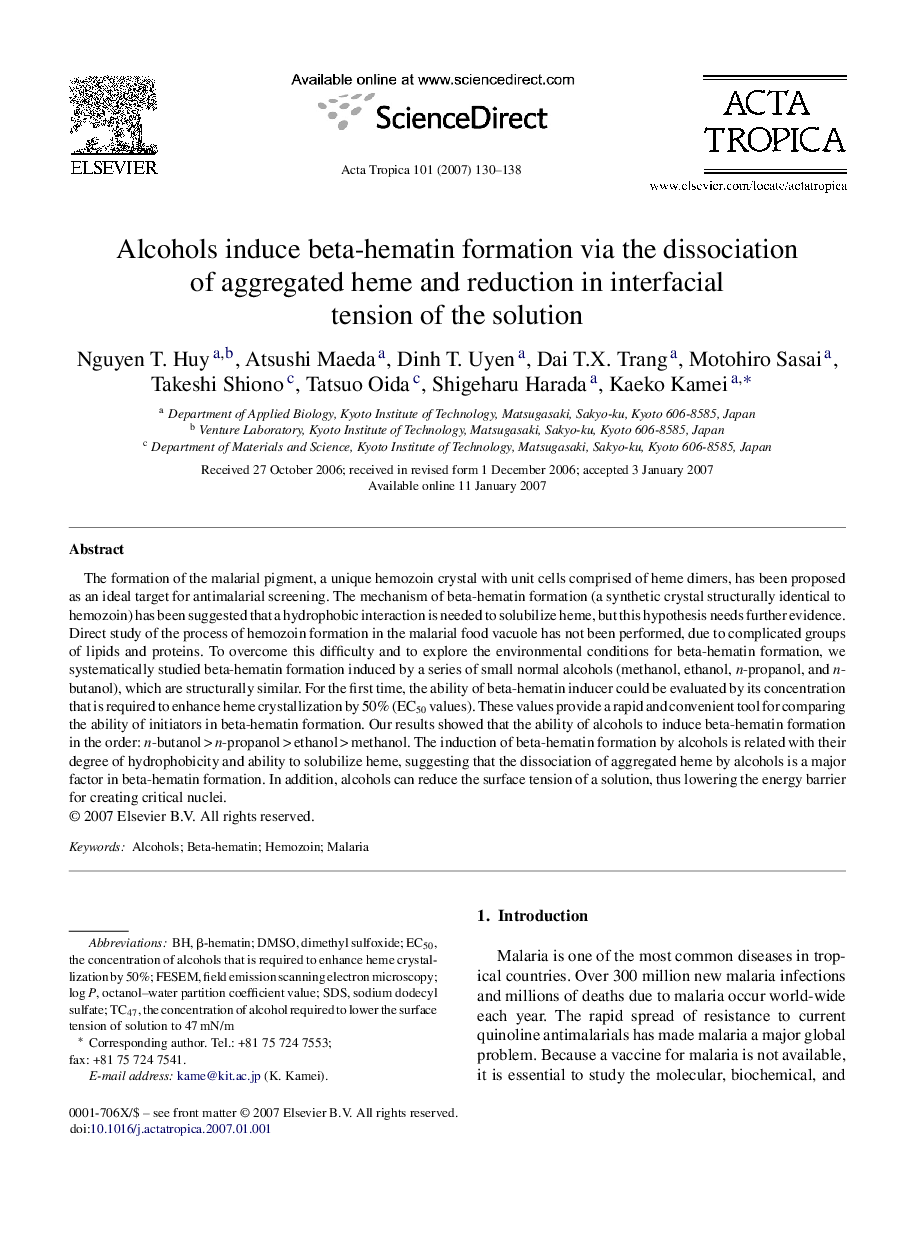| Article ID | Journal | Published Year | Pages | File Type |
|---|---|---|---|---|
| 3394627 | Acta Tropica | 2007 | 9 Pages |
The formation of the malarial pigment, a unique hemozoin crystal with unit cells comprised of heme dimers, has been proposed as an ideal target for antimalarial screening. The mechanism of beta-hematin formation (a synthetic crystal structurally identical to hemozoin) has been suggested that a hydrophobic interaction is needed to solubilize heme, but this hypothesis needs further evidence. Direct study of the process of hemozoin formation in the malarial food vacuole has not been performed, due to complicated groups of lipids and proteins. To overcome this difficulty and to explore the environmental conditions for beta-hematin formation, we systematically studied beta-hematin formation induced by a series of small normal alcohols (methanol, ethanol, n-propanol, and n-butanol), which are structurally similar. For the first time, the ability of beta-hematin inducer could be evaluated by its concentration that is required to enhance heme crystallization by 50% (EC50 values). These values provide a rapid and convenient tool for comparing the ability of initiators in beta-hematin formation. Our results showed that the ability of alcohols to induce beta-hematin formation in the order: n-butanol > n-propanol > ethanol > methanol. The induction of beta-hematin formation by alcohols is related with their degree of hydrophobicity and ability to solubilize heme, suggesting that the dissociation of aggregated heme by alcohols is a major factor in beta-hematin formation. In addition, alcohols can reduce the surface tension of a solution, thus lowering the energy barrier for creating critical nuclei.
